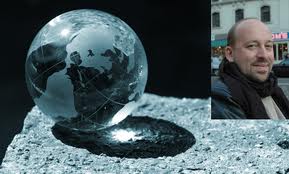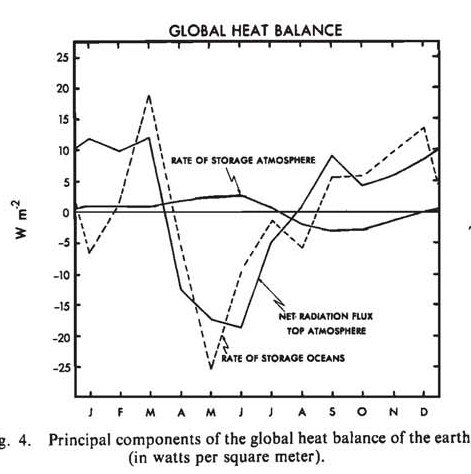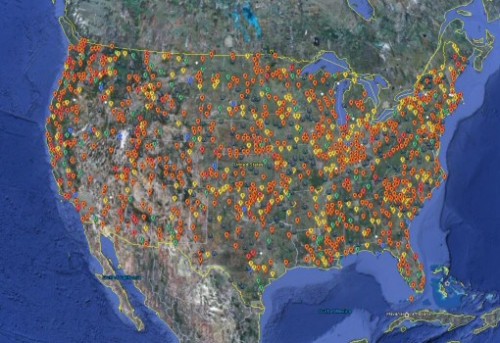
source of image
UPDATE JUNE 17 2012
My son had an insightful discussion on this subject in his post
The Narrow Defintion of Climate Change
where he refers to two of his papers
Pielke, Jr., R.A., 2005. Misdefining ‘‘climate change’’: consequences for science and action, Environmental Science & Policy, Vol. 8, pp. 548-561.
Pielke, Jr., R. A., 2004. What is Climate Change?, Issues in Science and Technology, Summer, 1-4.
*********ORIGINAL POST*************
The terminology in the field of climate and environmental science is filled with jargon words and the misuse of definitions. I have posted on this issue before with respect to the terms “global warming” and “climate change” in my posts
The Media (and Presidential Candidates) Remain In Error On The Distinction Between Global Warming And Climate Change
and
Recommended Definitions of “Global Warming” And “Climate Change”
To properly define these two terms, I recommended
Global Warming is an increase in the global annual average heat content measured in Joules.
Climate Change is any multi-decadal or longer alteration in one or more physical, chemical and/or biological components of the climate system.
Today’s post is to further elaborate on the terms that are used.
With respect to the terminology “climate change“, this term is being extensively used to mean “anthropognic caused changes in climate” from nearly “static” climatic conditions; e.g. see the figure below [source of image]

This is why terminology such as “climate stabilization” is misused; e. g. see
Climate Stabilization Targets: Emissions, Concentrations, and Impacts Over Decades to Millennia (2010)
where this National Academy report writes
This new report from the National Research Council concludes that emissions of carbon dioxide from the burning of fossil fuels have ushered in a new epoch where human activities will largely determine the evolution of Earth’s climate.
However, as documented in another Academy report
National Research Council, 2005: Radiative forcing of climate change: Expanding the concept and addressing uncertainties.Committee on Radiative Forcing Effects on Climate Change, Climate Research Committee, Board on Atmospheric Sciences and Climate, Division on Earth and Life Studies, The National Academies Press, Washington,D.C., 208 pp
and summarized in the article
Pielke Sr., R., K. Beven, G. Brasseur, J. Calvert, M. Chahine, R. Dickerson, D. Entekhabi, E. Foufoula-Georgiou, H. Gupta, V. Gupta, W. Krajewski, E. Philip Krider, W. K.M. Lau, J. McDonnell, W. Rossow, J. Schaake, J. Smith, S. Sorooshian, and E. Wood, 2009: Climate change: The need to consider human forcings besides greenhouse gases. Eos, Vol. 90, No. 45, 10 November 2009, 413. Copyright (2009) American Geophysical Union.
the natural causes of climate variations and changes are important, as are the human influences. The human climate forcings involve a diverse range of first-order climate forcings, including, but not limited to, the human input of carbon dioxide (CO2). Most, if not all, of these human influences on regional and global climate will continue to be of concern during the coming decades.
As reported in the NRC (2005) report and written in the Pielke et al 2009 article with respect to human climate forcings
In addition to greenhouse gas emissions, other first-order human climate forcings are important to understanding the future behavior of Earth’s climate. These forcings are spatially heterogeneous and include the effect of aerosols on clouds and associated precipitation [e.g., Rosenfeld et al., 2008], the infl uence of aerosol deposition (e.g., black carbon (soot) [Flanner et al. 2007] and reactive nitrogen [Galloway et al., 2004]), and the role of changes in land use/land cover [e.g., Takata et al., 2009]. Among their effects is their role in altering atmospheric and ocean circulation features away from what they would be in the natural climate system [NRC, 2005]. As with CO2, the lengths of time that they affect the climate are estimated to be on multidecadal time scales and longer.
With respect to natural climate forcings and feedbacks, in the article
Rial, J., R.A. Pielke Sr., M. Beniston, M. Claussen, J. Canadell, P. Cox, H. Held, N. de Noblet-Ducoudre, R. Prinn, J. Reynolds, and J.D. Salas, 2004: Nonlinearities, feedbacks and critical thresholds within the Earth’s climate system. Climatic Change, 65, 11-38.
we wrote
The Earth’s climate system is highly nonlinear: inputs and outputs are not proportional, change is often episodic and abrupt, rather than slow and gradual, and multiple equilibria are the norm.
Thus, the assumption of a stable climate system, in the absence of human intervention, is a mischaracterization of the behavior of the real climate system.
“Climate change’ is, and always has been occuring. Humans are now adding to the complexity of forcings and feedbacks, but change has always been a part of the climate system.
Thus, rather than using terminolgy such as “climate change” [which has come to mean the human caused part mostly due to added greenhouse gases], I recommend just using the term “climate” or “climate system”. When change is discussed, the specific component that is being discussed should be presented, such as an increase in annual averaged surface air temperatures, a decrease in the length of growing season etc. Phrases such as “changes in regional and global climate statistics” could be used.
There is a very important reason to scrap the use of “climate change” by the impacts community. Key societal and environental resources, such as water, food, energy, ecosystem function, and human health respond to climate not just to an incremental change in the climatic conditions.
Another misused term is “global change“, when really what is almost always meant is a local and/or regional change in the environmental conditions, including from climate. The accurate terminology should be “environmental change“.
Thus, my recommendations are to replace terminology such as climate change, climate stabilization, climate distruption and global change with accurate terminology. With respect to impacts on key resources, climate is one of the stressors, not just the “change” part. When changes in climatic conditions are discussed, present the actual climate variable(s) that are being altered.
This issue of terminology has been important as we work to complete the 5 volume set of books for Elsevier titled
“Climate Vulnerability – Understanding and Addressing Threats to Essential Resources”. 2013: Eds R.A. Pielke Sr., Faisal Hossain, Dev Niyogi, George Kallos, Jimmy Adegoke, Caradee Y. Wright, Timothy Seastedt, Katie Suding and Dallas Staley. Elsevier
which will appear early in 2013. Our edits for the chapters have required us to address the improper use of the terminology by some of the authors. The current weblog post is intended to alert others to the frequent mischaracterization of the climate system.
source of image












